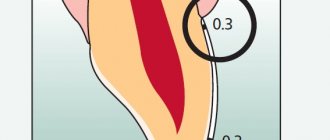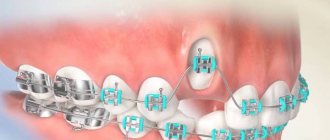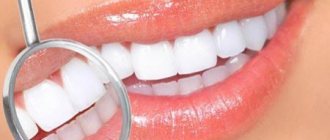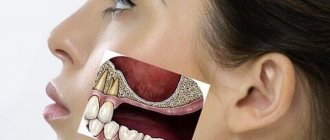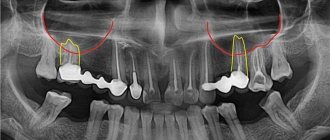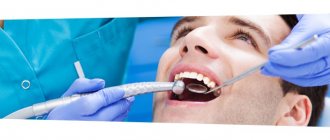Dental implantation is the replacement of a missing tooth with an artificial one by inserting a titanium screw into the jawbone. This is the most physiological and aesthetic way to restore the full functionality of the dentition among all the methods of dental prosthetics available today.
Modern implantation protocols make this procedure absolutely safe, predictable and most effective. However, even a flawlessly performed operation does not mean 100 successes. Although the survival rate of implants reaches 98-99%, in almost 2% of cases the titanium root is rejected.
How long does it take for an implant to take root and when can it fail?
It takes up to 6 months for the implant to take root securely in the bone. The engraftment time depends on various factors, among which the site of installation of the titanium root should be specifically highlighted:
- An implant in the upper jaw takes 5-6 months to take root on average, since the bone in this area is characterized by lower density and weaker blood supply.
- The osseointegration of an artificial root installed in the lower jaw takes 3-4 months.
Rejection of a titanium structure can occur either a couple of days after its installation or after several months or years. It happens that the rejection process is asymptomatic, but more often, such a complication manifests itself very clearly.
All diagnostic equipment is located in the clinic - you don’t need to go anywhere
In our Center, during the period of implantological treatment, correction of chronic diseases is carried out, consultations are carried out by a full-time anesthesiologist and an ENT doctor. All diagnostic equipment is located in the clinic, you do not need to go anywhere. Blood tests can also be taken without leaving the clinic; the results will be ready within a day.
Levin Dmitry Valerievich
Chief physician, Ph.D.
Selecting an implant system
The service life of an implant depends on the thoughtful choice of its type and shape in accordance with the bone tissue. Healing is influenced by design characteristics, including material, coating, thread, and connection to the abutment. Accurate placement of the implant at the correct angle is important. All this depends on the qualifications of the doctor.
Our Center uses exclusively Nobel Biocare root-shaped structures, which are guaranteed for life. The survival rate of Nobel implants is 99.3% . The company managed to achieve this through a special porous Ti-Unite coating, which replicates the chemical composition of a natural tooth root. The bone tissue does not perceive the implant as a foreign body and begins to fuse with it, ensuring reliable engraftment for life.
In the case of Nobel Biocare implants with Ti-Unite coating, which we use at the Center, successful engraftment can be judged within a few days after the operation.
Nobel Biocare implants with Ti-Unite coating
Implant installation methods
When installing implants, one- and two-stage methods are used, which affect the healing period. The doctor himself chooses which option is best suited in the clinical situation.
- Classical implantation (two-stage method) . First, only an artificial root is installed in the jaw, and the gum above it is sutured. After osseointegration of the implant with the bone, a crown is fixed to it. Osseointegration takes an average of two months, but depends on the characteristics of the patient.
- Implantation with immediate loading (one-stage method) . The crown is fixed onto the implant immediately after installing the titanium root. The implant takes root with light loads, which stimulates the formation of bone tissue around the implant, thus reducing the osseointegration time. But this protocol is indicated only if there is sufficient volume and quality of jaw bone tissue.
- Single-stage implantation . The implant is installed immediately after tooth extraction into the root socket. The blood clot turns into bone, which envelops the root already at the stage of its formation. This accelerates the process of osseointegration. But this method is possible if there are no inflammatory processes at the root of the tooth, and the bone corresponds to the parameters in terms of density and size.
Whatever method is chosen, it is important to maintain sterility during the procedure so as not to infect the implant bed.
Prosthetics is an important component of implantation
After the implant has healed, an abutment is put on it, and the crown is fixed on top with cement. It is possible for cement to penetrate under the gum, and if it is not cleaned out, the implant will fail. We have moved away from this outdated technology for fixing crowns, reducing the likelihood of implant failure. We fix metal-free zirconium dioxide crowns not with cement, but with a solid screw connection.
The hidden screw connection between the implant and the crown is the gold standard for completing implant treatment.
Compliance with recommendations and oral hygiene
The International Implant Foundation states that the cause of implant failure is poor hygiene and non-compliance with recommendations. Requirements that speed up survival and reduce the risk of complications:
- minimal trauma to the surgical area;
- brush your teeth with caution for the first three days;
- Do not eat too solid food for two weeks;
- do not stop taking prescribed medications;
- avoid hypothermia or overheating of the body;
- do not smoke or drink alcohol;
- do not hide alarming symptoms during the rehabilitation stage.
Signs of dental implant failure:
- Mobility of a titanium rod during immediate implantation.
- Continuous postoperative bleeding (longer than 2-4 days).
- Discharge of pus from the surgical wound 1-2 weeks after the intervention.
- Severe pain at the implantation site, which intensifies with pressure. Painkillers don't help.
- Swelling, edema, inflammation of the gum adjacent to the implant, change in its color (redness, cyanosis), proliferation of granulations, formation of ulcers or fistula.
Expert opinion
Igor Yurievich Malinovsky
Maxillofacial surgeon, implantologist
Experience: more than 11 years
Dental implant failure is a very rare occurrence. Provided that the implantation is carried out with high quality and the implants are correctly selected, everything ends successfully, and the patient uses new teeth for the rest of his life. If, due to violations of rehabilitation rules, accidental injury or other reasons, the implant is rejected, do not despair. In most cases, it is possible to install a new artificial root of larger diameter in its place after eliminating the pathological process.
Price of the procedure and other nuances
In each case, removal of a dental implant is considered in conjunction with solving related problems, an individual course of treatment is provided, so the final cost is calculated for each client. It is possible to pay for procedures in installments.
The least number of complications arise when a new tooth is implanted on the same day as the old implant is removed. There is no need to re-injure tissue or postpone the decision. Timely restoration of the row is beautiful and important. There is no additional atrophy of bones or gums, healing occurs quickly.
Experience shows: removal of implants and their replacement is a procedure that preserves the integrity of the dentition, optimal functioning of the gastrointestinal tract and increases the patient’s self-esteem during rehabilitation.
Why do dental implants fail?
There are three periods of artificial root rejection:
- From the moment of implantation to dentures.
- Within 2 years after the intervention
- In 2-3 years or more.
If the implants do not take root, the reasons for this complication are as follows:
- Infectious and inflammatory process around the titanium root (peri-implantitis).
- Insufficient volume or poor quality of the jawbone.
- Trauma to the jaw or excessive chewing loads on the recently implanted implant, which led to its displacement and the development of inflammation.
- An allergic reaction to titanium or its alloy (the material from which the artificial root is made).
- Incorrectly selected implant model, errors in its design or design.
- Individual characteristics of the body - exacerbation of a systemic disease, anomalies in the structure of the dental system or bone structures.
- Failure to comply with the recommendations of the implantologist means lack of oral hygiene, bad habits, and dietary errors.
- Errors during surgery - insufficient qualifications of the doctor, the use of implants and consumables of poor quality, non-compliance with the implantation protocol, incorrect installation of the screw structure, etc.
Regardless of what caused the signs of rejection, you should immediately consult a doctor.
Who is contraindicated for implantation?
Implantation is absolutely prohibited for patients with oncology, serious illnesses, in the stage of decompensation, serious violations of hemostasis and coagulation, and mental disorders that impede communication. There is also a wide range of relative contraindications, in which implantation is carried out only after stabilization of the patient’s condition.
These include:
- Acute infectious and inflammatory processes.
- Chronic infections (actinomycosis, tuberculosis, etc.)
- Recent endocarditis, rheumatism, abscess and other diseases that increase the overall risk of bacteremia.
- Exacerbation of chronic pathology.
- Had a stroke or heart attack less than 6 months ago.
- Hormonal and chemotherapy, taking immunosuppressants and other drugs that negatively affect tissue regeneration.
- Osteopathy.
Thanks to modern implantation protocols, the list of contraindications is becoming shorter every year. Only a few pathologies can become an impetus for implant rejection, and specialists take all necessary steps to minimize such a risk.
What to do if inflammation begins under the implant?
If inflammation begins around the artificial structure, treatment consists of eliminating the cause that caused it - removing bacterial plaque, improving the quality of oral hygiene, drug therapy, including antibiotics. If the inflammatory process is localized only in the gum area and has not led to the destruction of bone tissue around the implant, there is a 100% chance of eliminating the problem and preserving the structure. With the development of peri-implantitis, severe mobility of the titanium rod or its breakage, the structure is removed and anti-inflammatory treatment is carried out.
The final decision is made by the implantologist after appropriate diagnostic measures. During the period of restorative treatment, the patient is fitted with a temporary denture, which allows maintaining the functionality and aesthetics of the dentition.
Is it possible to re-implant after implant failure?
In general terms, the implantologist’s action plan if a dental implant has not taken root is as follows: removal of the structure, anti-inflammatory therapy, and after 1-2 months, reimplantation with osteoplasty (if necessary).
If the cause of rejection of the artificial root is severe peri-implantitis, then after removal of the screw and complex treatment, classical two-stage implantation may not be available due to severe bone loss. Of course, it is possible to build it up, but first it will take several months for tissue rehabilitation after the elimination of inflammation, and then another 3-6 months for the engraftment of osteoplastic material and the formation of new bone.
An excellent option is immediate loading implantation. Such protocols do not require bone tissue augmentation when 3 or more implants are implanted, but osteoplasty may still be required for single restorations. If dental implants have not taken root, and for medical reasons re-implantation is impossible, there are alternative methods of restoring the dentition - removable and fixed dentures.
Early implant failure
It can occur in the first six months, when the artificial root becomes overgrown with bone. If rejection occurs at this stage, it usually occurs without pain. The patient may feel the mobility of the titanium pin, and in rare cases, even be able to independently remove the artificial root. And you shouldn’t be afraid of this, since even a completely healthy person can experience rejection of an implant screwed in by the skillful hands of an experienced surgeon.
The cause of rejection may occur:
- from the general health of the patient;
- from his compliance with medical recommendations;
- on the volume of surgical intervention;
- on the choice of implant system;
- depends on the doctor’s ability to work with the implant system used.
For some patients (for example, with type 2 diabetes), the risk of rejection will be slightly higher, but the doctor will warn you about this in advance. But there is no need to worry here either, since even in people at risk, the implantation of artificial roots occurs successfully.
How to protect yourself from possible problems in advance?
All the reasons for implant rejection are well known to specialists, which means that the problem can be prevented. It is for this purpose that a thorough examination of the patient is carried out, concomitant diseases and contraindications to surgery are identified.
Here are some useful tips to help minimize potential problems associated with implant failure:
- You need to realize that responsibility for the results of implantation lies not only with the doctor, but also with the patient (failure to follow the specialist’s instructions can ruin the result of even a perfectly performed operation).
- You should choose a clinic specializing in implantology - such centers invest enough money in modern equipment and professional training of employees.
- It is worth contacting those specialists who have sufficient experience and have positive recommendations and reviews from former patients.
- You need to choose high-quality implants from well-known manufacturers.
- It is necessary to scrupulously follow all the implantologist’s instructions after the intervention and carefully monitor oral hygiene.
- You need to monitor your health and keep chronic diseases under control (especially HIV, diabetes and other pathologies that affect the regenerative abilities of tissues).
Of course, some moments are simply impossible to predict. But we must remember that implant rejection is isolated cases, not a pattern.
Conditions for successful osseointegration
“Engraftment” of implants has a greater chance of successful completion if:
- the operation is carefully prepared and planned;
- the patient is healthy and has no contraindications to the installation of implants;
- the dentist correctly chooses the method and method of performing this surgical procedure;
- High-quality implants from a trusted manufacturer are used for installation;
- the orthopedic stage proceeds without complications;
- the patient follows all recommendations of dentists, especially immediately after installation of an artificial root.
What to choose: implants or crowns?
From the point of view of functionality and aesthetics of the dentition, if one or more teeth are lost, the choice between a crown and implants is clearly in favor of the latter:
- An implant not only imitates a natural tooth – it completely replaces it.
- The crown is placed on a pulpless and ground tooth. The tissues of such teeth become less dense and susceptible to rapid destruction, so the loss of a crown is a matter of time. The implant will last for the rest of your life.
- When installing a crown, neighboring healthy teeth are injured; the implant is implanted in place of the missing unit and does not in any way affect the healthy teeth nearby.
Installation of a crown is justified only if there are contraindications to implantation.
Many patients choose traditional dentures based on financial considerations. The cost of installing a Swiss ROOTT implant on a turnkey basis is 32,000 rubles, and the price of a metal-ceramic crown is 25,000 rubles.
What you can eat and drink during the rehabilitation period, and what you can’t
In the first days after implantation, food should be soft, without hard pieces. For example, children's cottage cheese, meat in jars, as well as yogurt, broth (not fatty), boiled and pureed vegetables (you can mash with a fork or “punch” with a blender). Food should be complete, rich in vitamins and minerals - you can cook yourself an omelet with herbs, for example, or steam cutlets, cook porridge, pilaf. It is not recommended to eat very hot or cold food, so as not to burn the mucous membranes. It is better to chew on the non-operated side of the row.
Dentists recommend avoiding hard, spicy or canned foods and limiting sweets. It is also better to avoid alcohol for several reasons. Firstly, fusel oils slow down tissue regeneration. Secondly, alcohol is not compatible with drugs prescribed after implantation (in other words, there is a double load on the liver and kidneys). Thirdly, blood pressure increases, and the bleeding time from the wound may lengthen. Fourthly, there is a lack of coordination and an increase in appetite (you may accidentally damage your stitches or eat something hard).
Questions and answers
3 years ago I had implants placed on my lower jaw and the remaining teeth were removed.
And in March, all the implants were removed. The result is changes in bone tissue and flat gums. Is it possible to install a flexible prosthesis there? I have a removable denture on top. 3 years ago I had implants placed on my lower jaw with the removal of the remaining teeth. And in March, all the implants were removed. The result is changes in bone tissue and flat gums. Is it possible to install a flexible prosthesis there? On top of my head there is a removable denture
Hello! Prosthetics with soft dentures in such cases is possible, but a preliminary examination of the oral cavity is necessary. Come visit us for a free consultation. Based on the results of the examination, our orthopedists will offer you the best options for dental prosthetics in your case. You can make an appointment by calling + 7 (495) 789-42-02. Sincerely, Patient Support Center SIMPLADENT++8 800 333-53-41
I would like to know how safe it is to carry out implantation and prosthetics at once and whether installing a prosthesis will harm the healing of the implants?
Good afternoon. I have four teeth in a row on my upper jaw on the left side that need to be removed, including two front incisors. The doctor recommends immediate implantation and prosthetics. I would like to know how safe it is and whether installing a prosthesis will harm the healing of the implants. Of course, you don’t want to walk around with a hole in your mouth, but you also don’t want to make things worse.
Hello. Modern implantation systems used in implantation protocols with the possibility of immediate dentures are equipped with special aggressive threads. Implants are screwed into the bone, providing maximum tissue compression. That is, the bone becomes stronger and firmly holds the artificial root in the hole.
The adaptation prosthesis, which is installed on implanted implants, has a metal base that works on the principle of a beam - the implants and prosthesis are a single system, which ensures high primary stability and immobility in the jaw bone. Artificial teeth fixed on a metal beam are made of metal-plastic.
This is a lightweight material that is strong enough to fully participate in the chewing process, but does not overload the implants. Only with this material is it possible to correct the bite at the time of engraftment of the implants. The prosthesis is permanently fixed and should be worn until the osseointegration process is completed - on average this takes about 6-12 months. It is then replaced with a permanent structure made from more durable and aesthetic materials. More detailed information can be obtained at a free consultation with a specialist in one of our clinics.
SIMPLADENT specialists will answer all questions by phone: + 800 333-53-41 Other questions
Types of dental implantation
There are two main methods of dental implantation – classical and one-stage:
- The classic one involves a two-stage implant installation. First, a titanium implant is screwed into the prepared bed. After osseointegration of the artificial root, the gum former is fixed in place of the plug, and then the abutment and crown. This is a universal implantation protocol that allows you to fill dental defects of any location and extent.
- One-stage implantation involves installing an implant and a temporary orthopedic structure in just 3-4 days. The operation is performed using a gentle microsurgical method, without tilting the mucous flap and applying sutures. The implant is inserted through a micropuncture in the gum or into the tooth socket immediately after its removal.
One-stage methods also include the All-on-4/All-on-6 concept, which is the best option for patients with complete edentia in one or both jaws.
Work examples
How often do you visit the dentist?

